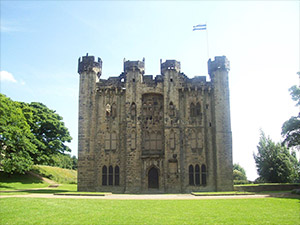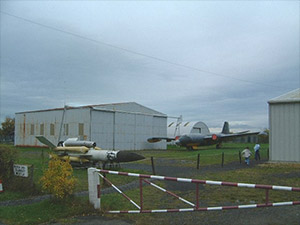Sunderland, Tyne and Wear, England
Wearmouth Bridge
Hylton Castle

Hylton Castle was built by Sir William Hylton around 1400. The Hylton family were considerably wealthy, and had estates in Yorkshire, Durham and Northumberland. By the 13th century they had assumed the title of a barony within the Bishopric of Durham.
The castle is reputedly haunted by guards which have been sighted on the ramparts, and that of a 'cauld lad' who was in life one Robert Skelton. The unfortunate stable boy was allegedly murdered in 1609 by Baron Robert Hylton.
Pictured left is the West face of Hylton Castle courtesy of Craigy144.
Craigavon Road,
Castletown,
Sunderland,
Tyne and Wear, SR5 3PA.
For more information, please read Haunted Britain by Richard Jones; Haunted Britain by Antony D. Hippisley Coxe and Britain's Haunted Heritage by J.A. Brooks.
North East Land, Sea and Air Museum

The North East Land, Sea and Air Museum (NELSAM), formerly the North East Aircraft Museum, is a volunteer-run aviation museum situated on the site of the former RAF Usworth/Sunderland Airport. It has the largest aviation collection between Yorkshire and Scotland and houses over 30 aircraft. The museum also has a small collection of other items such as weaponry, vehicles and other historical exhibits.
The museum is supposedly haunted by a number of World War 2 ghosts. These include a Czech airman named Augustin Preucil, and also that of a British pilot called Edward Shaw. The sounds of someone calling for help and the sighting of a bootless pair of legs have been attributed to him.
N.E.L.S.A.M,
Old Washington Road,
Sunderland,
Tyne & Wear, SR5 3HZ.
For more information, please read Haunted Britain by Richard Jones.








